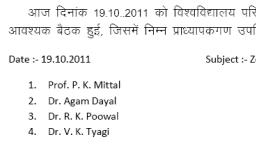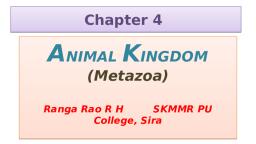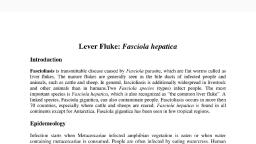Page 1 :
ECHINOCOCCUS GRANULOSUS, COMMON NAME: DOG TAPE WORM OR HYDATID WORM, , Kingdom - Animalia, Phylum _ - Platyhelminthes, Class - Cestoda, , Order - Cyclophyllidea, Family - Taeniidae, Genus - Echinococcus, , Species —- granulosus, , , , HISTORY AND DISTRIBUTION, , * Hydatid cysts had been described by Hippocrates and other ancient physicians., , + Adult E. granulosus was described by Hartmann in the small intestine of dog in, , 1695 and the larval form (hydatid cysts) was recognized in 1782 by Goeze., , * The disease is prevalent in most parts of the world, though it is most extensive in, , the sheep and cattle raising areas of Australia, Africa, and South America., * Itis also common in Europe, China, the Middle East and India., , + Itis seen more often in temperate than in tropical regions., , HABITAT, , * The adult worm lives in the jejunum and duodenum of, , dogs and other canine carnivora (wolf and fox)., , * The larval stage (hydatid cyst) is found in humans and, , herbivorous animals (sheep, goat, cattle and horse).
Page 2 :
MORPHOLOGY, Adult Worm, + Small tapeworm, 3-6 mm in length., * Consists of a scolex, a short neck, and strobila., , * The scolex is pyriform, with 4 suckers and a prominent, rostellum bearing 2 circular rows of hooklets (25-30)., , * The neck is short (3 mm x 6 mm)., , anterior immature, the middle mature, and the posterior, , + The strobila is composed of only 3 proglottids, the a Tl os s, gravid segment &, , + The terminal proglottid is longer and wider than the rest, , of the worm and contains a branched uterus filled with i 7, , eggs. br scorer, * The adult worm lives for 6-30 months ne, Egg, , + Indistinguishable from those of Taenia species., + Ovoid in shape and brown in color., , * Contains an embryo with 3 pairs of hooklets., , Larval Form, , + Found within the hydatid cyst developing inside various, organs of the intermediate host., , + Represents the structure of the scolex of adult worm and, remains invaginated within a vesicular body., , + After entering the definitive host, the scolex with suckers and, rostellar hooklets, becomes exvaginated and develops into, adult worm., , | intestines, internal, organs, , adult, , encysted larva, , oncosphere, external, , environment
Page 3 :
LIFE CYCLE, , The worm completes its life cycle in 2 hosts, , Definitive hosts: Dog (optimal host), wolf, jackal, and fox, Intermediate host: Sheep and Cattle. Sheep is the ideal intermediate host., Man acts as an accidental intermediate host (dead end)., , €The larval stage of the parasite is passed in intermediate hosts, including man,, giving rise to hydatid cyst., , The adult worm lives in the small intestine of dogs and other canine animals., These animals discharge numerous eggs in the feces., , Intermediate hosts (sheep and cattle) ingest them while grazing., , Human infection follows ingestion of the eggs due to intimate handling of infected, dogs or by eating raw vegetables or other food items contaminated with dog, feces., , , , , , , , , , , ‘Adult in, small intestine, rotoscolex, from cyst, , Definitive host, (Dogs & other canidae), , , , , , , , , Intermediate host, (Sheep. goats, swine, etc.), , , , , Embryanated egg, ih feces), , , , , , A, Ad crtective phase, , XA = hatches, AM viagnostic phase, , penetrates intestinal wall, , , , Hyd, (in Iver, lungs. ete.), , The ova ingested by man or by sheep and cattle are liberated from the chitinous wall, by gastric juice liberating the hexacanth embryos which penetrate the intestinal wall, , and enter the portal venules, to be carried to the liver along the portal circulation., , These are trapped in hepatic sinusoids, where they eventually develop into hydatid, , cyst., About 75% of hydatid cyst develop in liver, which acts as the first filter for embryo., , However, some embryo which pass through the liver, enter the right side of heart, and are caught in pulmonary capillaries (forming pulmonary hydatid cysts), so that, , the lung acts as the second filter., , Universal Free E-Book Store
Page 4 :
Universal Free E-Book Store, , Brood capsule Hooklets, , , , , , Fig. 12.18: Microscopy shows 3 layers in the wall of hydatid cyst. Inbox in the right photomicrograph shows a scolex with a row of hooklets., Courtesy: Harsh Mohan, Textbook of Pathology, 6th ed. New Delhi: Jaypee Brothers, 2013(R), p.617, , A few enter the systemic circulation and get lodged in various other organs, , and tissues such as the spleen, kidneys, eyes, brain, or bones., , When sheep or cattle harboring hydatid cysts die or are slaughtered, dogs, , may feed on the carcass or offal., , Inside the intestine of dogs, the scolices develop into the adult worms that, , mature in about 6-7 weeks and produce eggs to repeat the life cycle., , When infection occurs in humans accidentaly, the cycle comes to a dead end, , because the human hydatid cysts are unlikely to be eaten by dogs.













































